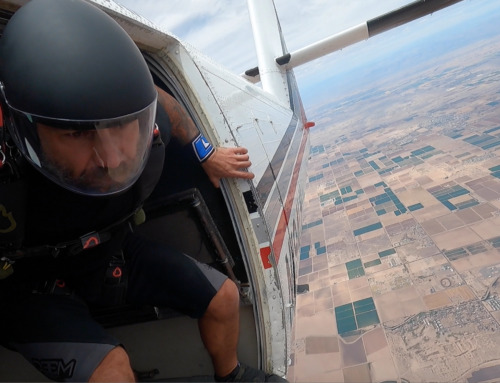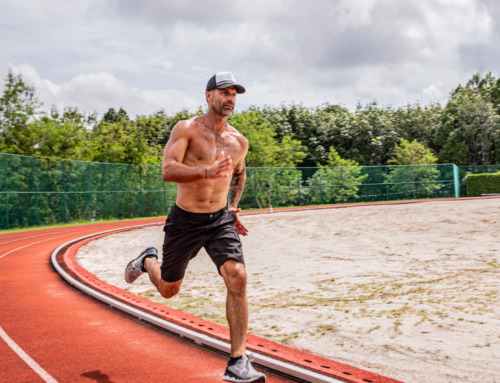By Damien Rider
All lessons in this process take a science-based and holistic approach to level-up your mind, body function and bring change to your life. Meaning you are viewed on a physical, mental, and emotional level as a whole person– no one is just a trauma survivor, just an athlete, just a professional, or just a parent or a spouse. We all have different aspects of our life. This reprocessing, reconnecting, and strengthening benefits all of them.
Each part of your life is connected, working interdependently. This means that how you perform in and feel about one area of your life directly affects all the others. For example, you can see this in the way people bring stress from work home or worries from home distract them at work. The same applies to when we are mentally distracted, and our physical performance isn’t optimum.
In this next lesson, we’re going to talk about controlling your physical, mental, and emotional energy levels through your breath. Our goal is that by the end of the lesson, you’ll have more ideas for how to apply this practice to all aspects of your life every day. By having an increased understanding, connection, and calm focus, you’ll be able to allow distractions to run their course while you continue to move forward, no longer having to fight to block them out or look for an escape vice.
Optimizing Your Breath Throughout Your Day
“Resilience is not just for surviving the worst day of your life. It’s for thriving every day of your life.” – Dr. Rick Hanson
Waking up in the morning, many people instantly begin thinking about their lengthy to-do lists, what they need to finish at work, or reach over for their phones and begin scrolling through social media. Before you know it, your mind is going a million miles per minute down a highway called stress, loading up the weight of thoughts on your shoulders and occupying your mind and thoughts to carry through the day, and your day hasn’t even begun.
Although experts don’t seem to agree on the perfect morning routine, we can all find common ground on one thing: claiming your time and starting your day on a positive note, with a clear head, helps set the tone for the activities to come. In beginning the day while setting tone and pace, we want a mind-less practice. This method opens up space for new, exciting and valuable active mind thoughts to stimulate us through the day. Establishing a morning routine is essential if you want to regain control of your day, your thoughts, and the best possible version of yourself.
Whether you like to work out first thing in the morning, read the newspaper, take a cold shower, or you’re so pressed for time that you just need to get a quick breakfast in before you’re waking up the kids or heading out on your daily commute. Setting your breath pace by your conscious breath connection can help you start your day with a calm focus. Instead of feeling like there isn’t enough time in the day, you will achieve more in less time.
Soon, you’ll be moving from activity to activity, inevitably coming into contact with some kind of challenge, so take a proactive approach by connecting with your breath first thing in the morning. Just like before your workouts, take 30-60 seconds to activate your deep and calm breath (allowing optimum oxygen, nitric oxide, and carbon dioxide transitions through your body) and an active meditative headspace when you wake up.
If your morning routine has usually consisted of some traditional long form meditation, either guided by an app or YouTube clip or self-taught practice, moving it to lunchtime or after work, to break up the daily load under pressure, will give a total mind and body reset throughout your day. This way, you can see and process how your mind, body, and emotions respond to your active and conscious breath practice, first thing in the morning.
Throughout the day, take short breaks to connect to your breath, especially around lunchtime so that you can continue your work with more energy and a sense of calm focus. If you know you’re going to have to enter a situation that feels stressful for you, set aside a few minutes to practice self- connection with your breath beforehand. Correct your natural breath to ensure you’re breathing in through your nose, all the way down to inflate your belly and slowly release through your mouth. Scanning your entire body to release any tension you may be holding onto or have built up over thinking what’s ahead. Even without a stressful situation being present, you will see improvement in your actions, reactions and project an engaging and confident voice.
Set an alarm or reminders on your phone every 2-3 hours and take a minute to stand up, stretch, and reconnect to your breath and physical self, disconnecting from heightened senses around you. Even just 30 seconds at a time can be just what you need to reprocess your thoughts and feelings to continue forward.
By the end of the day, you’ll notice such a difference in your energy and mood. You’ll have an easier time relaxing and winding down your day without any stress or guilt because you were able to be more present and resilient throughout the day, with a calm focus to increase purpose and productivity.






